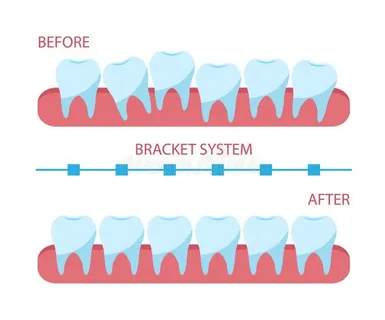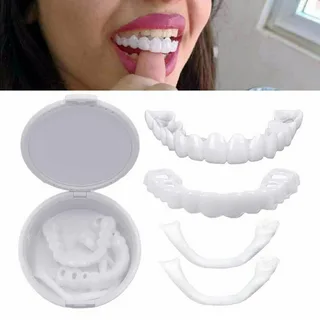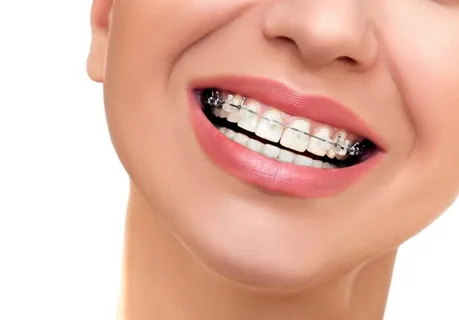Braces
Braces are orthodontic devices used to correct teeth alignment, improve bite function, and enhance overall dental appearance. They are commonly used to treat crooked teeth, overcrowding, gaps, overbites, underbites, and other dental issues. Braces work by applying continuous pressure on teeth, gradually shifting them into the desired position over time.
Braces are an effective and popular solution for improving the alignment of teeth, correcting bite issues, and enhancing oral health. Whether you choose traditional metal braces, ceramic options, lingual braces, or clear aligners like Invisalign, braces can help you achieve a healthier, more attractive smile. It’s important to consult an orthodontist to determine the best treatment plan based on your specific needs.
Types of Braces
Traditional Metal Braces:
- Description: The most common type, consisting of metal brackets, archwires, and rubber bands.
- Appearance: Metal brackets are attached to the teeth and connected by a wire that is adjusted periodically.
- Treatment Time: Usually takes 18–24 months depending on the severity of the issue.
- Pros: Highly effective and suitable for most orthodontic issues.
- Cons: More visible than other options.
Ceramic Braces:
- Description: Similar to traditional metal braces, but the brackets are made of clear or tooth-colored ceramic material.
- Appearance: Less noticeable than metal braces.
- Treatment Time: Similar to metal braces.
- Pros: Less visible, making them a popular choice for adults and teens.
- Cons: Can be more fragile and may stain over time.
Lingual Braces:
- Description: These braces are attached to the back (lingual side) of the teeth, making them invisible from the outside.
- Appearance: Completely hidden from view.
- Treatment Time: Comparable to traditional braces.
- Pros: Invisible to others, offering a discreet treatment option.
- Cons: May be uncomfortable initially, harder to clean, and more expensive.
Clear Aligners (Invisalign):
- Description: A set of clear, removable trays that gradually straighten teeth. Invisalign is a popular alternative to traditional braces.
- Appearance: Virtually invisible and custom-fitted for comfort.
- Treatment Time: Generally 12–18 months, depending on the complexity of the case.
- Pros: Aesthetic appeal, removable for eating and cleaning, more comfortable.
- Cons: May not be suitable for severe cases, requires discipline to wear them for at least 20-22 hours a day.
Self-Ligating Braces:
- Description: Similar to traditional metal braces but use a sliding mechanism to hold the wire, eliminating the need for elastic bands.
- Appearance: More compact than traditional braces.
- Treatment Time: Shorter treatment time in some cases.
- Pros: Fewer adjustments and less friction, which can lead to faster treatment.
- Cons: Slightly more expensive than traditional braces.
Benefits of Braces
Improved Teeth Alignment:
- Braces help straighten crooked teeth, close gaps, and align the bite, leading to a more attractive smile.
Better Bite Function:
- Braces can correct issues such as overbites, underbites, crossbites, and open bites, improving the way teeth fit together and function.
Enhanced Oral Health:
- Straighter teeth are easier to clean, reducing the risk of cavities, gum disease, and other dental issues associated with misaligned teeth.
Boosted Confidence:
- Many people experience increased self-esteem and confidence after undergoing orthodontic treatment due to the improved appearance of their smile.
Long-Term Benefits:
- Once the treatment is completed, teeth are properly aligned, leading to better long-term oral health and preventing issues such as excessive wear, tooth decay, and gum disease.
How Do Braces Work?
Initial Consultation:
- An orthodontist evaluates the alignment of your teeth and jaw, discusses treatment options, and takes X-rays and impressions for custom planning.
Placement of Braces:
- The brackets are affixed to the teeth using a dental adhesive, and an archwire is threaded through the brackets. The wire is adjusted periodically to apply pressure to the teeth.
Adjustment Appointments:
- Regular visits to the orthodontist are necessary (every 4-6 weeks) to adjust the wire and change elastics. These adjustments continue for the duration of the treatment.
Retainers:
- After braces are removed, retainers are used to maintain the position of the teeth and prevent them from shifting back.
Duration of Treatment
- The typical duration of orthodontic treatment with braces is 18–24 months, but this can vary depending on the severity of the dental issue, the type of braces used, and how well the patient follows the orthodontist’s instructions.
Care and Maintenance During Treatment
Oral Hygiene:
- Braces require careful cleaning to prevent plaque buildup and staining. Brushing with a soft toothbrush and flossing with special tools designed for braces is essential.
Dietary Restrictions:
- Certain foods like sticky candies, hard foods, and gum should be avoided, as they can damage the brackets or wires.
Regular Check-Ups:
- Regular orthodontic visits are necessary to monitor progress and make adjustments to the braces.
Handling Discomfort:
- After adjustments, braces may cause discomfort for a few days, which can be managed with over-the-counter pain relievers and soft foods.
Key Feature about Braces

Effective Teeth Alignment

Customizable Treatment Options

Improved Oral Health
Frequently asked questions
Here are descriptions for FAQs about Root Canal Treatment (RCT) to provide a clear understanding:
Braces are orthodontic devices used to straighten misaligned teeth, correct bite issues, and improve oral health.
Braces apply gentle, continuous pressure to move teeth into better positions. The process gradually shifts teeth over time.
Braces are typically worn for 18–24 months, but treatment time depends on the complexity of your case.
Initial discomfort or soreness can occur after the braces are placed or adjusted, but it is temporary and manageable with pain relievers.
The types of braces include:
- Metal Braces: Traditional metal brackets and wires.
- Ceramic Braces: Clear or tooth-colored brackets.
- Lingual Braces: Braces placed on the back of teeth, hidden from view.
- Clear Aligners (e.g., Invisalign): Transparent, removable trays.
Here are descriptions for FAQs about Root Canal Treatment (RCT) to provide a clear understanding:

